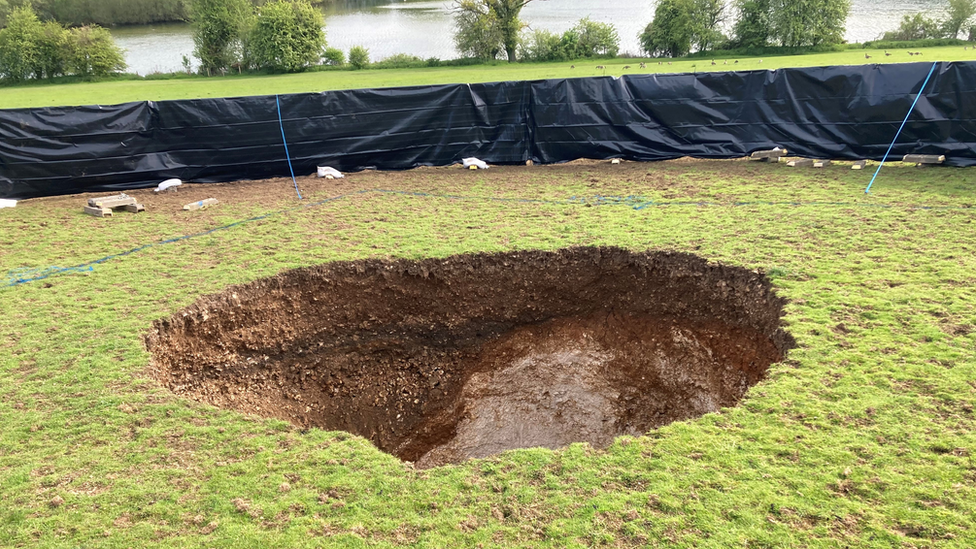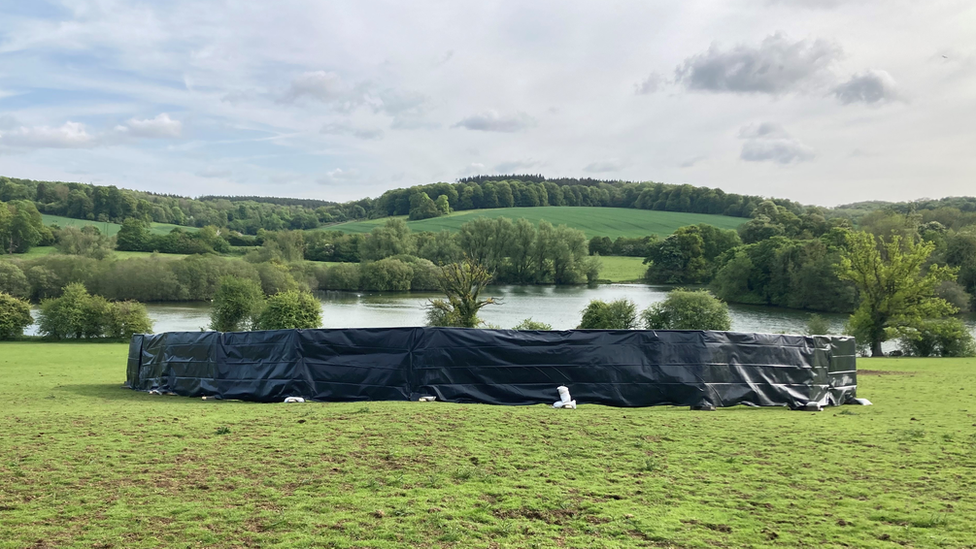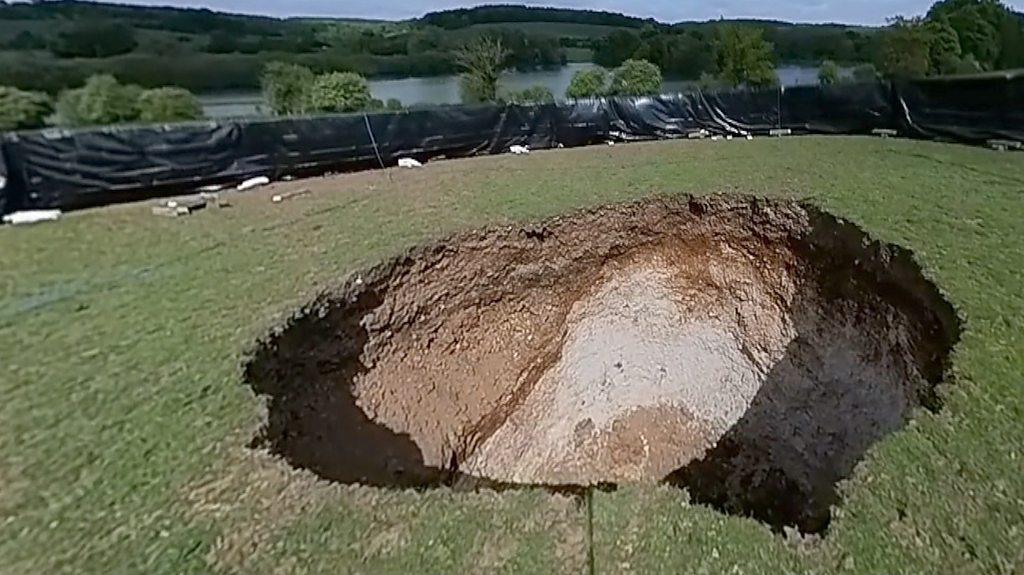HS2 Chiltern tunnel sinkhole did not pollute water, says inquiry
- Published

The Environment Agency said there was "no pollution to the local environment or permits breached"
A sinkhole caused by tunnel boring as part of the HS2 rail project did not pollute the local water network, an investigation has concluded.
The 20ft (6m) wide, 16ft (5m) deep crater opened in the ground above part of the Chiltern tunnel near Little Missenden, Buckinghamshire, in May.
The Environment Agency (EA) has concluded no pollution was found near the sinkhole.
The crater has since been filled with chalk.
An EA spokesperson said it would "continue to talk to local people, the water industry and local authorities to ensure the environment is protected throughout the HS2 project".

HS2 said work to fill the hole would continue in the spring
The sinkhole appeared in Bazzards Field, south west of Shardeloes Lake, above the 10-mile (16km) Chiltern tunnel, the longest on the HS2 line.
The hole, which was near a public right of way, was filled in with 165 cubic metres of chalk by HS2 contractors in September.
Further work to ensure the hole is filled in is due in the spring of next year.
Paul Jennings of the River Chess Association, which campaigns for clean water, contacted the EA with concerns after the sinkhole emerged.
He said: "We have been giving a consistent message to HS2: 'Don't tunnel through chalk, it's unstable'."
However, an HS2 spokesperson added: "Our regular water monitoring has not shown up any impact on water quality.
"[It's] important to note that the hole itself was actually above the water table."

Follow East of England news on Facebook, external, Instagram, external and X, external. Got a story? Email eastofenglandnews@bbc.co.uk, external or WhatsApp 0800 169 1830
Related topics
- Published17 May 2023

- Published15 May 2023

- Published14 May 2023
